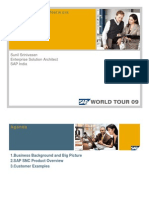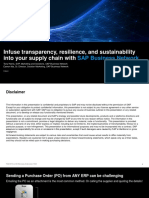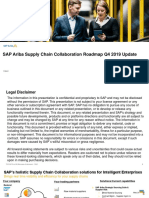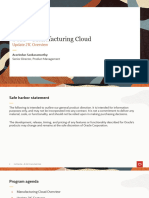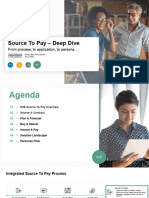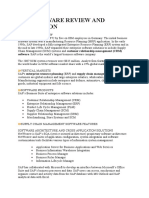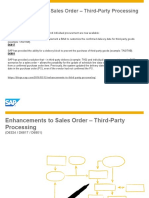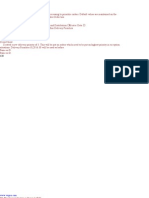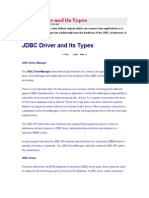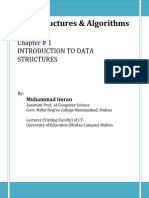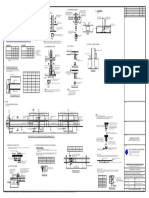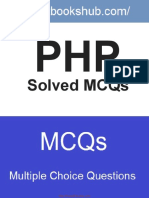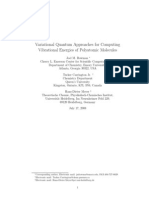SAP Note 1281192 - Implementation recommendations for SNC
7.0
Note Language: English Version: 5 Validity: Valid Since 15.09.2011
Summary
Symptom
This note provides information about Implementation recommendations for SNC
7.0
Other terms
SCM, ICH, Implementation recommendations for SNC 7.0
Reason and Prerequisites
This note describes implementation recommendations for SNC 7.0
Solution
Recommendations by Component
SCM-ICH-AFS (Functions for SAP Apparel and Footwear)
Currently no restrictions
SCM-ICH-AMO (Alert Monitor)
Currently no restrictions
SCM-ICH-ASN (Advanced Shipping Notification)
While Supplier batch is being stored and transfered on ASN, it is not
displayed on the UI.
Serial Numbers not checked against master data Serial number Uniqueness
only ensured within ASN.
Cancellation of ASN cannot be transmitted to ERP. A user exit solution is
possible.
SCM-ICH-DIO (Data Inbound / Data Outbound Management)
Currently no restrictions
SCM-ICH-EM (Event Manegement for SAP SNC)
Currently no restrictions
SCM-ICH-ERP (ERP-SNC Integration)
Mappings to IDOCs: Mappings from ERP IDoc to XML are only provided for A2A
communication (OED ERP < > SNC) and vice versa. Please note that this means
that in case of supplier collaboration SAP does not deliver a mapping XML
format to the supplier's system and in case of customer collaboration SAP
doesn't deliver a mapping XML format to the customer's systems.
In ERP there can be a single contract reference for each vendor generated
PO only.
The deletion of sales orders or sales order items in SAP R/3 is not
allowed, because the information cannot be transferred via IDoc to the XML.
Usually the order or order item will be cancelled/rejected in SAP R/3
instead of deleted.
12.03.2013 Page 1 of 8
� SAP Note 1281192 - Implementation recommendations for SNC
7.0
For ERP->SNC integration, transfer batch classification on PO item level is
not supported.
A material that is obtained from a supplier as part of a scheduling
agreement release procedure cannot be obtained in ERP from another supplier
within an SMI scenario. This also applies to all procurement combinations
where a supplier orders the material on the basis of the net demand
calculation (for example, forecast delivery schedules or purchase orders)
at the same time as another supplier obtains this material via SMI or
inbound delivery control. Such combinations are also not possible. The
following is a brief explanation of the reasons for the
restriction:arrangement function that we also use for multisourcing refers
to goods receipts (synonym: procurement elements, demand coverage
elements). In other words, the sources of supply of the procurement
elements are assigned in accordance with the procurement quotas maintained
and the quotas are updated correspondingly. These procurement elements (for
example, purchase orders, scheduling agreement delivery schedules,
production orders, and so on) are created by the MRP run to cover demand.
These procurement elements (for example, scheduling agreement delivery
schedules) can then be divided among multiple sources ( suppliers) in MRP
in accordance with quota arrangements, in other words, a source of supply
is assigned to each procurement element. Within the framework of stock
procurement in MRP (at SAP), all procurement elements can potentially cover
all demands, in other words, there is no separation of the requirements
elements (for example, in accordance with the SMI case and the non-SMI
case) and there is also no separation of the procurement elements.
There is no PO outbound message from ERP when goods receipt quantity is
changed.
ERP does not transmit delivery tolerances with standard IDOC. Delivery
Tolerances from Lane master Data can be used on SNC.
Transmission of number of blocked kanbans with the SNC kanban master data
report and transmission of the supply area description text is only
available in ERP2005 SP2 and Plug-In 2004.1 SP11.
Restrictions regarding Goods receipts handling by sending out Proof of
Deliveries (OPOD output message type) from SAP R/3 to SAP ICH 5.0 Please
consider that sending out of a Proof of delivery (message output type =
OPOD) after posting a (Partial)Goods receipt has certain restrictions which
needs to be reflected in SAP ICH 5.0 related supplier collaboration
processes:
* Goods receipt process for inbound delivery (T-Code VL32N) POD can be
sent out only once, therefore a partial goods receipt booking does not
make sense. Full good receipt is possible!
* Goods receipt process via T-Code MIGO: Sending out of a POD immediately
via MIGO is not supported There are different options for transferring
(Partial) Goods receipts information to SAP ICH 5.0 by using the RSMIPROACT
report (Please read the SNC online documentation - section 'Overview of
processing GR data from SAP-R/3').
Batch number integration with ERP only on PO item level, and not for
subcontracting components or individual schedule lines.
Rejection of PO items (confirmation with zero quantitity and rejection
status) cannot be received by ERP. OK for ERP2005.
12.03.2013 Page 2 of 8
� SAP Note 1281192 - Implementation recommendations for SNC
7.0
Transmission of goods recipient vendor with standard PO IDOC only with user
exit(see note 888599)
Invoice-Specific Restrictions in ERP-SNC Integration:
Invoice-specific fields (e.g. Net price, currency, payment terms, etc.) in
scheduling agreements, contracts and info records are not transferred to
SNC.The issue is solved with note 1053121 for SAP ERP 2005. The solution
will be downported to SAP R/3 Enterprise.As a workaround invoice specific
fields can be maintained in the Partner-Dependent Purchasing Documents
screen in SNC webUI and via transaction /SAPAPO/MTI2 (ERS indicator)."
Revalution is only supported in the self-billing scenario.
SAP ERP does not publish an Invoice Confirmation.
It is not possible to post subsequent debits or credits and unplanned
delivery costs via INVOIC Idoc in Standard SAP ERP.The issue can be solved
with note 1040648.
SCM-ICH-FCS (Forecasting)
Currently no restrictions
SCM-ICH-FTR (File Transfer)
Currently no restrictions
SCM-ICH-IMO (Inventory Monitor)
Deployment functionality is only available on SCM server version, as APO
deployment is used.
Advanced safety stock functionality is only available on SCM server
version, as APO functionality is needed.
Product allocation is only available on SCM server version, as APO product
allocation functionality is needed.
The Order Forecast Monitor cannot be used to show data derived from
purchase orders, which take part in the SPM supersession process.
SCM-ICH-IV (Invoice)
Currently no restrictions
SCM-ICH-KNB (Kanban)
Currently no restrictions
SCM-ICH-MD (Master Data)
Currently no restrictions
SCM-ICH-NDC (Net Demand Calculation)
Purchasing group not supported in PO in SMI process. It is not retrieved
from contract for replenishment orders(relevant for SMI process).
No ATP check is performed within RR planning services. ATP results from the
ERP back-end can be received for replenishment orders which have been
published to the ERP back-end.
SCM-ICH-PO (Purchase Order and Replenishment Order)
Replenishment Orders: The only replenishment order changes from customer
12.03.2013 Page 3 of 8
� SAP Note 1281192 - Implementation recommendations for SNC
7.0
side considered in the responsive replenishment scenario are PO-Numbers,
which are transferred into the Sales Order via the IDOC ORDRSP. No other
order changes are taken into account.
SNC needs full update mode for transmission of standard PO IDOCs: user exit
required (see note 888599).
ERP cannot send final delivery indicator with standard IDOC. To close POs
on SNC, a customer project solution is required. Alternatively one can work
with ASNs on SNC and use delivery tolerances from master data to close PO
items.
The SNC contract manufacturing procurement scenario is based on ERP
interface functionality introduced in SAP ERP 2005.
Components assigned to a schedule line in SNC should be changeable until a
goods receipt happened in SAP ERP, exact until open quantity equal
requested quantity. The BAPI_PO_CHANGE, which is sent from SAP ERP to SNC,
however, does not contain the goods receipt quantity of the PO schedule
line. This needs to enhanced in a customer project. Alternatively, one can
work with ASNs.
There is no PO outbound message from ERP when final delivery indicator
(ELIKZ) is set during goods receipt posting.
PO and invoice does not support text items. Also PO components must refer
to SCM master data.
No Handling Unit (HU) mapping is carried out on SAP XI while converting the
Replenishment Order Notification XML to the ORDERS.ORDERS05 IDoc.
Changes of the delivery date of the sales order item made in SAP R/3 SD
(Sales and Distribution component) are not transferred back to SAP ICH 5.0
This is a SAP R/3 Backend Integration limitation in regards to the
responsive replenishment scenario.
SCM-ICH-PRO (Promotion Planning)
Currently no restrictions
SCM-ICH-QM (Quality)
Currently no restrictions
SCM-ICH-REL (Scheduling Agreement Release)
Integration with APO for scheduling agreement release and corresponding
confirmations is tested and released by SAP only from SAP SCM 5.0.
SCM-ICH-REP (Reporting)
Currently no restrictions
SCM-ICH-RET (Returns)
Returns Instruction, Returns ASN: can only be used as part of SPM returns
scenario.
SCM-ICH-SCO (Supplier Confirmation)
Currently no restrictions
12.03.2013 Page 4 of 8
� SAP Note 1281192 - Implementation recommendations for SNC
7.0
SCM-ICH-SNI (Supply Network Inventory)
Ownership of stock is linked to consignment indicator in XML integration.
The integration reports for the extended SNI scenario of SNC 5.1 are only
available from ERP2005 EhP2.
SCM-ICH-TLB (Transport Load Builder)
Transport Load Builder User Interface ( TLB UI) only shows the currently
requested quantities of replenishment orders (which may or may not take
into account the confirmations).
SCM-ICH-WO (Work Order)
SCM server installation and live cache is required for generating work
orders based on PDS and PPMs master data.
The work order projection calculates a low projected quantity in case there
is a product which skips a phase. For example: Consider a work order with
three phases: 1st phase, 2nd phase, transport phase. According to the plan
10 pieces of product A and 5 pieces of product B come out of the 1st phase.
Then only product A continues through the 2nd phase. Both product A and
product B go into the following transport phase, meaning all 10 A's and 5
B's are delivered. Now actual data identical with the plan is provided for
the 1st phase: 10 A's and 5 B's came out of the 1st phase. The work order
will calculate the projected total quantity of 10 instead of 15, since the
projection algorithm does not take the product B into account which skips
the 2nd phase. Workaround: set up phase structure so that product B also
moves through the 2nd phase, even though nothing is done to the product in
the 2nd phase. When capturing the actual output of product B in the 1st
phase, immediately also capture the input and output of this product in the
2nd phase. Then this product will be available for the projection in the
transport phase.
Automated adaption of work orders only for changing delivery schedule
lines.
WO process: no supplier side integration into ERP systems is delivered.
There are B2B XML message interfaces.
WO integration: the B2B XML message interfaces cannot transmit the freely
defined parameter value pairs of the work order.
Scheduling in the standard WO process does not depend on the quantities of
the components or products. There are BADIs to extend te sceduling
functionality.
While some details of a work order can be maintained manually before
publishing it to the supplier, no change in the list and sequence of phases
overall is possible.
Recording of actuals on a work order have to be related to a (dummy)
product and contain a quantity.
WO process: no supplier side integration into ERP systems is delivered.
There are B2B XML message interfaces.
To create a work order in SNC, a purchase order has to be present in SNC as
predecessor order document. Accordingly, WOs always have a transportation
12.03.2013 Page 5 of 8
� SAP Note 1281192 - Implementation recommendations for SNC
7.0
phase to the POs ship-to location.
In WO worklist/overview, the supplier/customer batch id columns do not show
the changed batch ids.
In production run, if batch id is not present in inventory, but batch id is
required by configuration settings the process flow stops.
A WO schedule line should not be modified or split (resulting an origin and
a first child schedule line) multiple times before the original and the
first child's status is not finalized (e.g the original schedule line is
"cancelled", and the first child's status is "accepted").
Co-Product's characteristics does not shown in the WO overview/WL.
Cross-Application Function Recommendations
Number Ranges
On ICH order document numbers must be unique by business partner. A
simultaneous use of the same number for different systems of the
samebusiness partner is not supported.
A purchase order or a release is unique for a customer. The data storage in
the ODM is partner dependent. It is not allowed in the SAP R/3s to use
overlapping number ranges for PO and Release numbers. Therefore, if more
than 1 SAP R/3 are connected to the SAP SNC System you need to create in
SAP SNC 1 a Customer Partner for each backend system.
Rounding
While it is possible to maintain >2 level rounding values in rounding
profile, only the first two levels will be considered.
Exceptions
The planning Service SPP_DUE_ALERT, which creates the alert type 7806, can
be executed in SCM server only.
B2B Mappings
SAP does not provide mappings from the SAP B2B XML messages used by SNC to
external standards (and vice versa).(Changed at 17.09.2008)
SAP SNC Web UI
In general SNC supports only base unit of measure on user interfaces,
except PO, ASN, Invoice.
Batch Functionality
The batch functionality is available for products, co-products, components
in SNC 7.0 only if the batch management flag is set in the product master.
12.03.2013 Page 6 of 8
� SAP Note 1281192 - Implementation recommendations for SNC
7.0
Unloading Point in supplier collaboration has 20 characters only (ERP: 25).
(Changed at 17.09.2008)
In customer collaboration, Return Delivery Instruction Notification: item
level group ID has only 3 characters. (Changed at 17.09.2008)
(Dis-)aggregation functionality over locations and/or products is not
provided( Changed at 17.09.2008 )
In customer collaboration: the functionality for inventory split concerning
baseline/promotion and out of stock calculation require that inventory and
sales data are sent in one Product Activity XML message. This is a
limitation related to the Data Import Controller which is one process step
in the Responsive Replenishment Scenario. Consider that e. g. sending
inventory report and sales report in two EDI files wouldn't work, unless it
can be put in one Product Activity XML message. ( Changed at 17.09.2008 )
The following restrictions apply for the planning object structure
functionality of SCM basis which relies on SAP Netweaver BI
- A BI client must be defined at the beginning of the implementation and
can not be changed afterwards.
- The planning object structures used for and delivered with SNC can only
be modified in the BI client. These changes however should not be
necessary, so this applies only for modifications to the system.
( Changed at 17.09.2008 )
Header Data
Release Status: Released for Customer
Released on: 29.11.2011 15:17:46
Master Language: English
Priority: Recommendations/additional info
Category: Release planning information
Primary Component: SCM-ICH-AMO Alert Monitor
Valid Releases
Software Component Release From To and
Release Release Subsequent
SCM 700 700 700
Related Notes
12.03.2013 Page 7 of 8
� SAP Note 1281192 - Implementation recommendations for SNC
7.0
Number Short Text
1412844 Implementation recommendations for APO 7.0 SPP
1410295 Implementation recommendations for SAP F&R 5.1 on SCM 7.0
1409611 Implementation recommendations for APO 7.0 gATP
1409386 Implementation recommendations for APO 7.0 TP/VS
1406424 Implementation recommendations for APO 7.0 PP/DS
1405656 Implementation recommendations for APO 7.0 DP
1405636 Implementation recommendations for APO 7.0 MD, INT, INC
1405601 Implementation recommendations for APO 7.0 SNP, CTM and VMI
1284758 Implementation recommendations for SAP EWM 7.0
1273529 Implementation recommendations for SAP AII 7.0
1180861 SAP SNC 7.0 ERP integration
1179583 Implementation recommendations for EM 7.0
12.03.2013 Page 8 of 8


